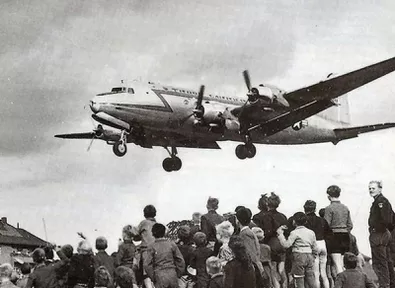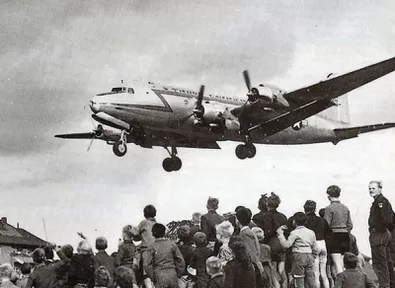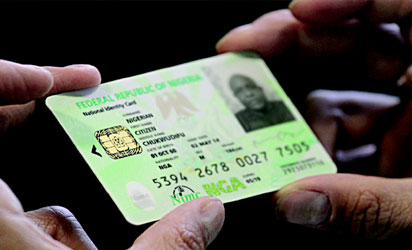SOVIET IN HISTORY: Berlin Airlift and Blockade in the Cold War

By Kennedy Hickman, ThoughtCo
Updated on February 14, 2018
With the conclusion of World War II in Europe, Germany was divided into four occupation zones as had been discussed at the Yalta Conference. The Soviet zone was in eastern Germany while the Americans were in the south, the British the northwest, and the French the southwest. Administration of these zones was to be conducted through the Four Power Allied Control Council (ACC). The German capital, located deep in the Soviet zone, was similarly divided between the four victors. In the immediate period following the war, there was great debate regarding what extent Germany should be allowed to rebuild.
During this time, Joseph Stalin actively worked to create and place in power the Socialist Unity Party in the Soviet zone. It was his intention that all of Germany should be communist and part of the Soviet sphere of influence. To this end, the Western Allies were only given limited access to Berlin along road and ground routes. While the Allies initially believed this to be short-term, trusting to Stalin’s goodwill, all subsequent requests for additional routes were denied by the Soviets. Only in the air was a formal agreement in place which guaranteed three twenty-mile-wide air corridors to the city.
Tensions Increase
In 1946, the Soviets cut off food shipments from their zone into western Germany. This was problematic as eastern Germany produced the majority of the nation’s food while western Germany contained its industry. In reply, General Lucius Clay, commander of the American zone, ended shipments of industrial equipment to the Soviets. Angered, the Soviets launched an anti-American campaign and began to disrupt the work of the ACC. In Berlin, the citizens, who had been brutally treated by the Soviets in the closing months of the war, voiced their disapproval by electing a staunchly anti-communist city-wide government.
With this turn of events, American policymakers came to the conclusion that a strong Germany was necessary to protect Europe from Soviet aggression. In 1947, President Harry Truman appointed General George C. Marshall as Secretary of State. Developing his “Marshall Plan” for European recovery, he intended to provide $13 billion in aid money. Opposed by the Soviets, the plan led to meetings in London regarding reconstruction of Europe and the rebuilding of the German economy. Angered by these developments, the Soviets began stopping British and American trains to check the identities of the passengers.
Target Berlin
On March 9, 1948, Stalin met with his military advisors and developed a plan for forcing the Allies to meet his demands by “regulating” access to Berlin. The ACC met for the last time on March 20, when, after being informed that the results of the London meetings would not be shared, the Soviet delegation walked out. Five days later, Soviet forces began restricting Western traffic into Berlin and stated that nothing could leave the city without their permission. This led to Clay ordering an airlift to carry military supplies to the American garrison in the city.
Though the Soviets eased their restrictions on April 10, the pending crisis came to head in June with the introduction of a new, Western-backed German currency, the Deutsche Mark. This was ardently opposed by the Soviets who wished to keep the German economy weak by retaining the inflated Reichsmark. Between June 18, when the new currency was announced, and June 24, the Soviets cut off all ground access to Berlin. The next day they halted food distribution in the Allied parts of the city and cut off electricity.
Having cut off Allied forces in the city, Stalin elected to test the resolve of the West.
Flights Begin

Unwilling to abandon the city, American policymakers directed Clay to meet with General Curtis LeMay, commander of United States Air Forces in Europe, regarding the feasibility of supplying West Berlin’s population by air. Believing that it could be done, LeMay ordered Brigadier General Joseph Smith to coordinate the effort. Since the British had been supplying their forces by air, Clay consulted his British counterpart, General Sir Brian Robertson, as the Royal Air Force had calculated the supplies required to sustain the city. This amounted to 1,534 tons of food and 3,475 tons of fuel per day.
Before commencing, Clay met with Mayor-Elect Ernst Reuter to ensure that the effort had the support of the people of Berlin. Assured that it did, Clay ordered the airlift to move forward on July 26 as Operation Vittles (Plainfare). As the US Air Force was short on aircraft in Europe due to demobilization, the RAF carried the early load as American planes were moved to Germany. While the US Air Force began with a mix of C-47 Skytrains and C-54 Skymasters, the former was dropped due to difficulties in unloading them quickly. The RAF utilized a wide array of aircraft from C-47s to Short Sunderland flying boats.
While initial daily deliveries were low, the airlift quickly gathered steam. To ensure success, aircraft operated on strict flight plans and maintenance schedules. Using the negotiated air corridors, American aircraft approached from the southwest and landed at Tempelhof, while British aircraft came from the northwest and landed at Gatow. All aircraft departed by flying due west to Allied airspace and then returning to their bases. Realizing that the airlift would be a long-term operation, the command was given to Lieutenant General William Tunner under the auspices of the Combined Airlift Task Force on July 27.
Initially derided by the Soviets, the airlift was allowed to proceed without interference. Having overseen the supply of Allied forces over the Himalayas during the war, “Tonnage” Tunner quickly implemented a variety of safety measures after multiple accidents on “Black Friday” in August. Also, to speed up operations, he hired German work crews to unload aircraft and had food delivered to pilots in the cockpit so they would not need to deplane in Berlin. Learning that one of his flyers had been dropping candy to the city’s children, he institutionalized the practice in the form of Operation Little Vittles. A morale-boosting concept, it became one of the iconic images of the airlift.
Defeating the Soviets
By the end of July, the airlift was delivering around 5,000 tons a day. Alarmed the Soviets began harassing incoming aircraft and attempted to lure them off course with fake radio beacons. On the ground, the people of Berlin held protests and the Soviets were forced to establish a separate municipal government in East Berlin. As winter approached, airlift operations increased to meet the city’s demand for heating fuel. Battling severe weather, the aircraft continued their operations. To aid in this, Tempelhof was expanded and a new airport built at Tegel.
With the airlift progressing, Tunner ordered a special “Easter Parade” which saw 12,941 tons of coal delivered in a twenty-four hour period on April 15-16, 1949. On April 21, the airlift delivered more supplies by air than typically reached the city by rail in a given day. On average an aircraft was landing in Berlin every thirty seconds. Stunned by the success of the airlift, the Soviets signaled an interest in ending the blockade. An agreement was soon reached and ground access to the city reopened at midnight on May 12.
The Berlin Airlift signaled the West’s intention to stand up to Soviet aggression in Europe. Operations continued until September 30 with the goal of building a surplus in the city. During its fifteen months of activity, the airlift provided 2,326,406 tons of supplies which were carried on 278,228 flights. During this time, twenty-five aircraft were lost and 101 people killed (40 British, 31 American). Soviet actions led many in Europe to support the formation of a strong West German state.
– ThoughtCo








